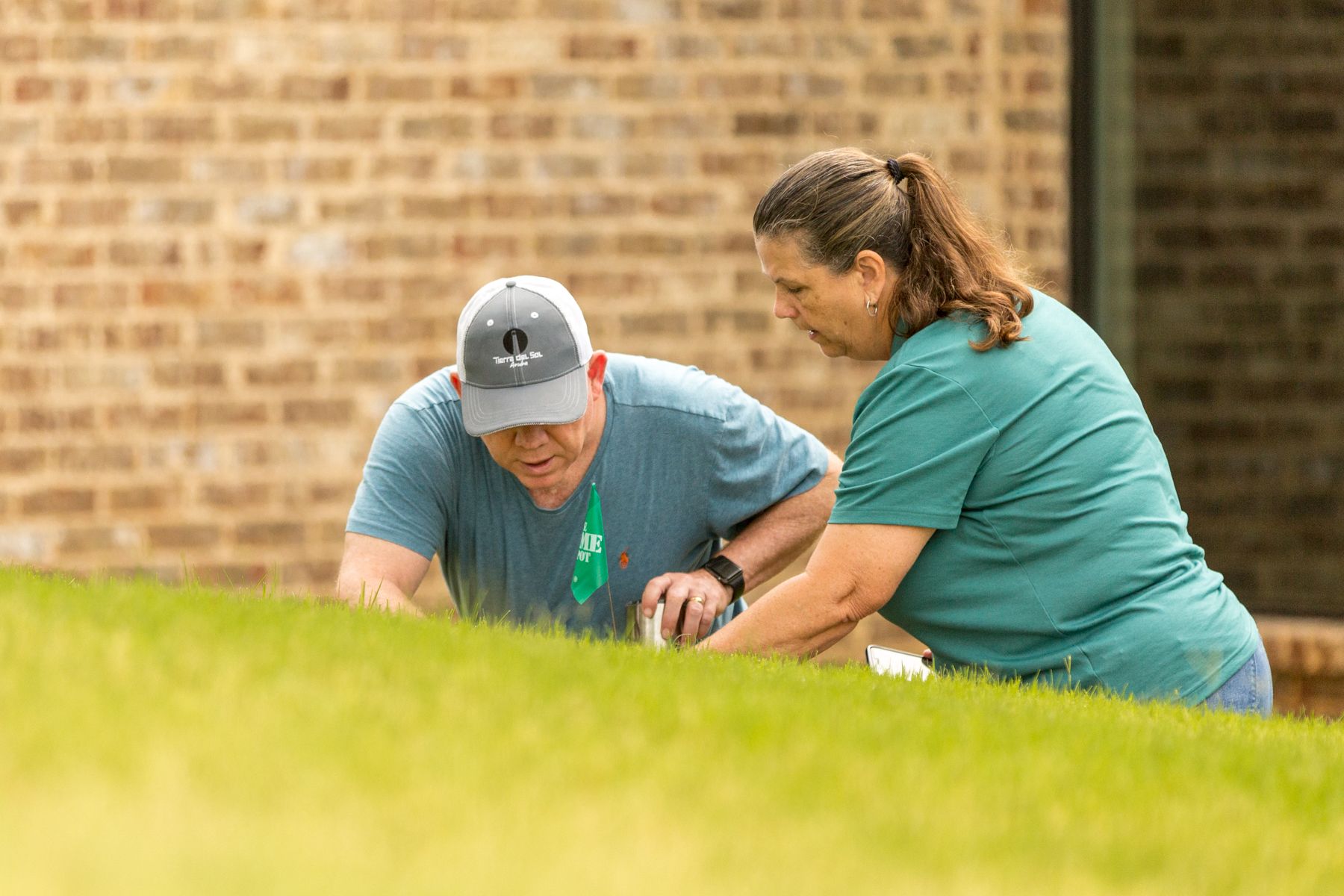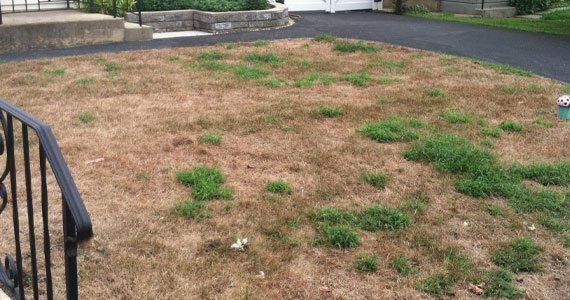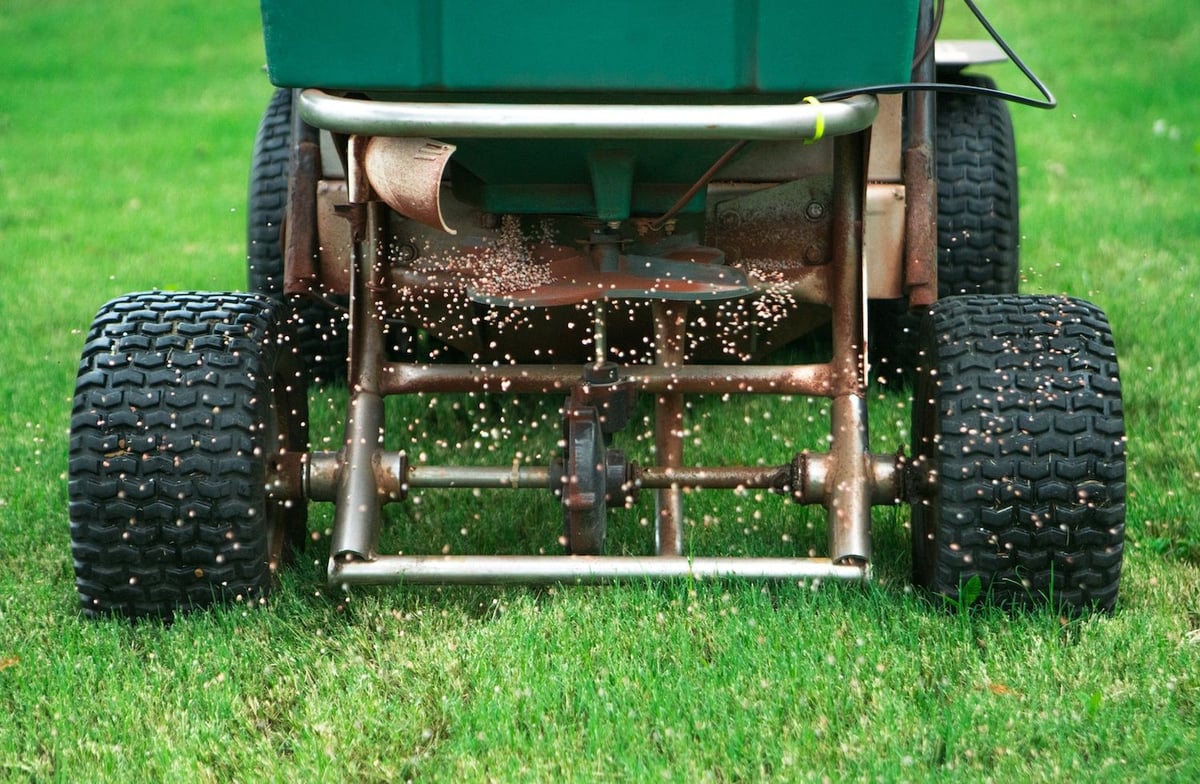
Although you might feel as though you do all the right things when it comes to having a thick, healthy, and thriving lawn, there are a number of enemies out there. A big one is lawn pests! Various types of lawn pests can be highly destructive and need to be properly addressed.
Among them, chinch bugs can be a major source of frustration. This is a pest that could be feeding on your lawn, right under your nose.
We understand that you care about your lawn and want to keep it in optimal shape. That’s why we’re covering everything from what chinch bugs look like to how to treat chinch bugs in your lawn.
As with any pest, the first step is proper chinch bug identification. After all, you have to understand what you’re dealing with before you can start to address it.

Of course, chinch bug identification comes with a challenge—they’re incredibly small!
The adult chinch bug is only about 1/6 of an inch long, with a black or gray body and white wings. It also has a distinctive triangular marking on its back near the head.
Since chinch bugs are so small, you're more likely to notice damage before spotting the bugs themselves.
Despite their size, chinch bugs are highly destructive at all life stages. Both nymphs and adults feed by sucking fluids from grass blades and injecting toxins that cause the lawn to turn yellow, then brown, and eventually die.
Chinch bug damage can mimic other lawn problems such as:
If you’re unsure whether it’s chinch bugs, disease, or drought, keep reading for how to confirm.

If you suspect chinch bugs because of dry, yellow, or dead patches in your lawn, there are some simple ways to investigate.
Once you confirm the presence of chinch bugs, the next step is proper treatment. The best approach is to contact a lawn care professional who can apply a curative insecticide that targets chinch bugs effectively.

At Grassperson, we don’t include chinch bug control in our standard lawn care programs because not every lawn experiences this issue. We don’t want clients to pay for something they may never need.
That said, chinch bugs are a real threat in North Texas, and early detection plus fast treatment is critical. If you notice damage, we recommend contacting your lawn care provider immediately.
Chinch bugs are most active during hot, dry weather, typically from late June through September. If you notice lawn discoloration during these months, chinch bugs could be the culprit.
While some infestations are unpredictable, there are a few factors that can make your lawn more attractive to chinch bugs:
While you can't always prevent chinch bugs entirely, you can make your lawn less inviting to them.
Chinch bugs prefer lawns under stress, so improving overall lawn health is your best long-term defense.

At the end of the day, your lawn care professional should be your partner in the fight against pests, including chinch bugs.
One of the benefits of being in a comprehensive lawn care program is having an expert regularly monitoring your lawn. This increases the chances of spotting pest problems early, before they become severe.
Still, we understand that some issues can develop between service visits. That’s why we always encourage homeowners to reach out if they notice anything unusual. A quick response can make all the difference.

Even though pests like chinch bugs can be frustrating, you don’t have to tackle them alone. With Grassperson on your side, you’ll have peace of mind knowing your lawn is getting the care it needs to thrive, without falling victim to hidden pests.
Ready for a gorgeous lawn at your Flower Mound, Highland Village, or Argyle, TX home, without the stress of chinch bugs or other pests? Get a free quote today and take the first step toward having the best lawn on the block.
Image Source: chinch bug
These Stories on Lawn Care